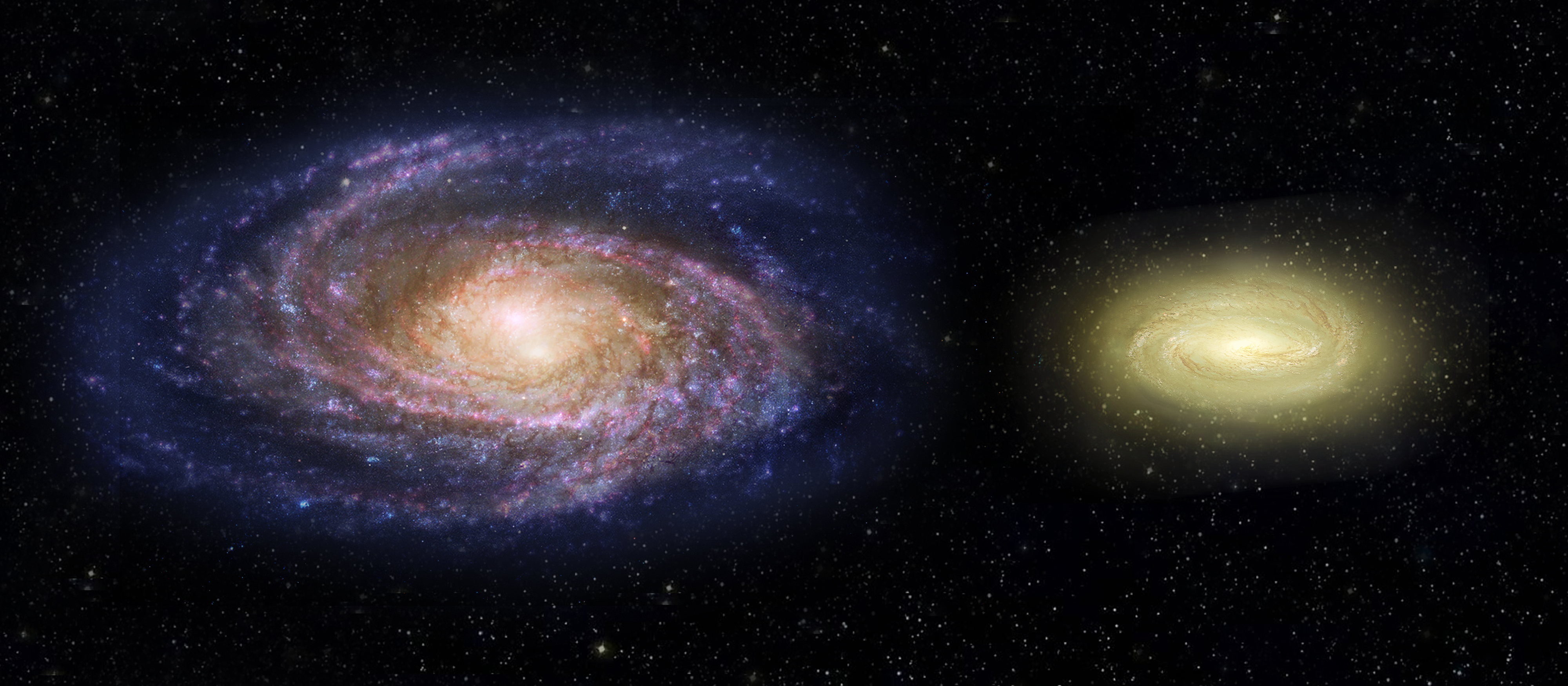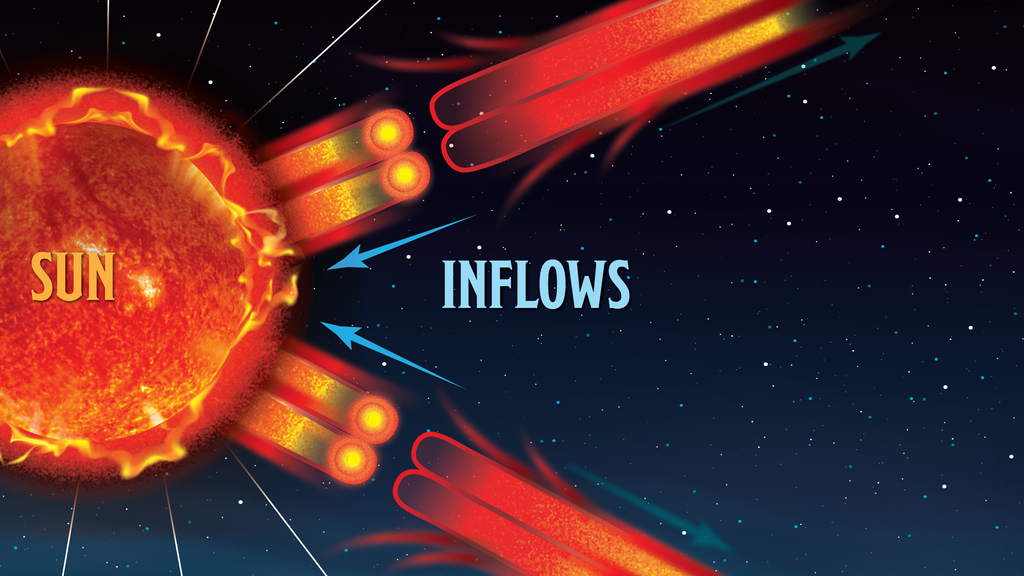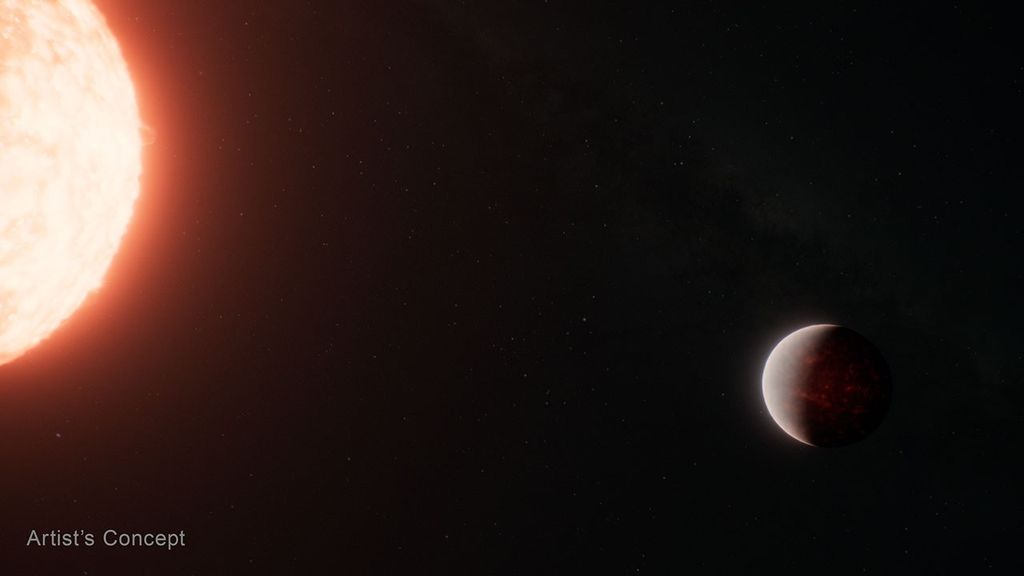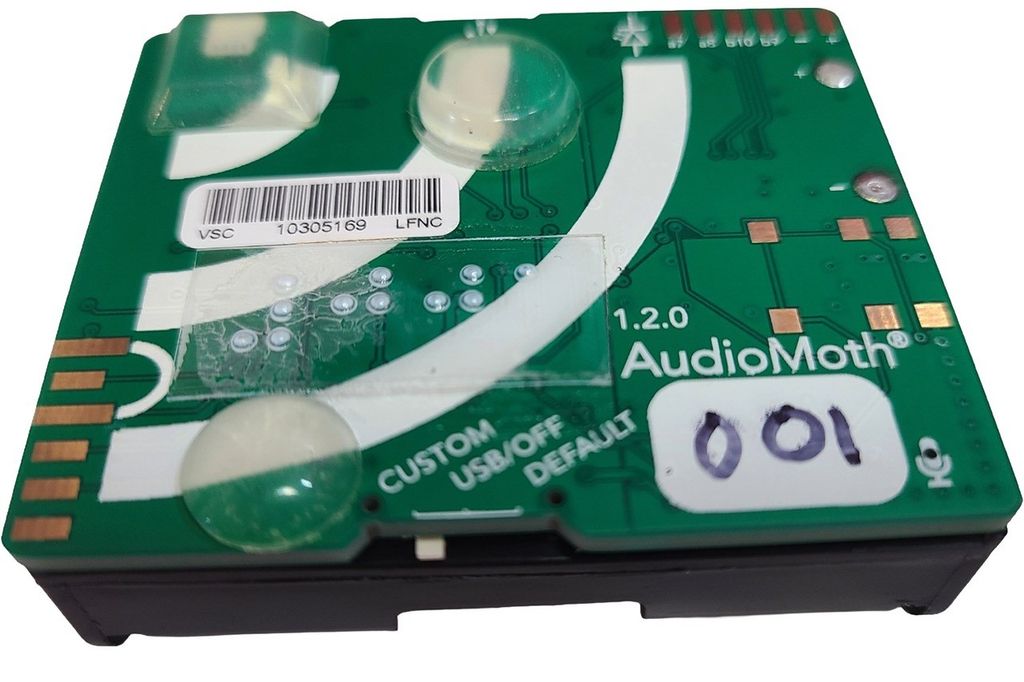1 min read
Galaxy Cluster MACS J2129-0741 and Lensed Galaxy MACS2129-1

Dying Young: Massive Dead Disk Galaxy Challenges the Picture of How Galaxies Evolve
Acting as a “natural telescope” in space, the gravity of the extremely massive foreground galaxy cluster MACS J2129-0741 magnifies, brightens, and distorts the far-distant background galaxy MACS2129-1, shown in the top box. The middle box is a blown-up view of the gravitationally lensed galaxy. In the bottom box is a reconstructed image, based on modeling, that shows what the galaxy would look like if the galaxy cluster were not present. The galaxy appears red because it is so distant that its light is shifted into the red part of the spectrum.
About the Object
- R.A. PositionR.A. PositionRight ascension – analogous to longitude – is one component of an object's position.21h 29m 22.34s
- Dec. PositionDec. PositionDeclination – analogous to latitude – is one component of an object's position.-07º 41' 31.1"
- ConstellationConstellationOne of 88 recognized regions of the celestial sphere in which the object appears.Aquarius
- DistanceDistanceThe physical distance from Earth to the astronomical object. Distances within our solar system are usually measured in Astronomical Units (AU). Distances between stars are usually measured in light-years. Interstellar distances can also be measured in parsecs.Galaxy cluster MACS J2129-0741: 5.7 billion light-years, lensed galaxy MACS2129-1: 10.6 billion light-years
About the Data
- Data DescriptionData DescriptionProposal: A description of the observations, their scientific justification, and the links to the data available in the science archive.
Science Team: The astronomers who planned the observations and analyzed the data. "PI" refers to the Principal Investigator.The Hubble image was created from HST data from proposal 12100 P.I. M. Postman (STScI) - InstrumentInstrumentThe science instrument used to produce the data.HST ACS/WFC, WFC3/IR
- Exposure DatesExposure DatesThe date(s) that the telescope made its observations and the total exposure time.May 2011 - August 2011
- FiltersFiltersThe camera filters that were used in the science observations.ACS/WFC F435W, F475W, F606W, F625W, F775W, F814W, F850LP, WFC3/IR F105W, F110W, F125W, F140W, F160W
- Object NameObject NameA name or catalog number that astronomers use to identify an astronomical object.Galaxy cluster: MACS J2129-0741 0.588, lensed galaxy: MACS2129-1
- Object DescriptionObject DescriptionThe type of astronomical object.Gravitationally lensed galaxy in cluster of galaxies
- Release DateJune 21, 2017
- Science ReleaseHubble Captures Massive Dead Disk Galaxy that Challenges Theories of Galaxy Evolution
- Credit

These images are a composite of separate exposures acquired by the ACS and WFC3 instruments on the Hubble Space Telescope. Several filters were used to sample narrow wavelength ranges. The color results from assigning different hues (colors) to each monochromatic (grayscale) image associated with an individual filter. In this case, the assigned colors are: Blue: ACS/WFC F435W+F475W+F606W+F625W Green: ACS/WFC F775W+F814W+F850LP Red: WFC3/IR F105W+F110W+F125W+F140W+F160W

Related Images & Videos

Artist's Concept of Milky Way vs Galaxy MACS2129-1
This artist's concept shows what the young, dead, disk galaxy MACS2129-1, right, would look like when compared with the Milky Way galaxy, left. Although three times as massive as the Milky Way, it is only half the size. MACS2129-1 is also spinning more than twice as fast as the...
Share
Details
Claire Andreoli
NASA’s Goddard Space Flight Center
Greenbelt, Maryland
claire.andreoli@nasa.gov































